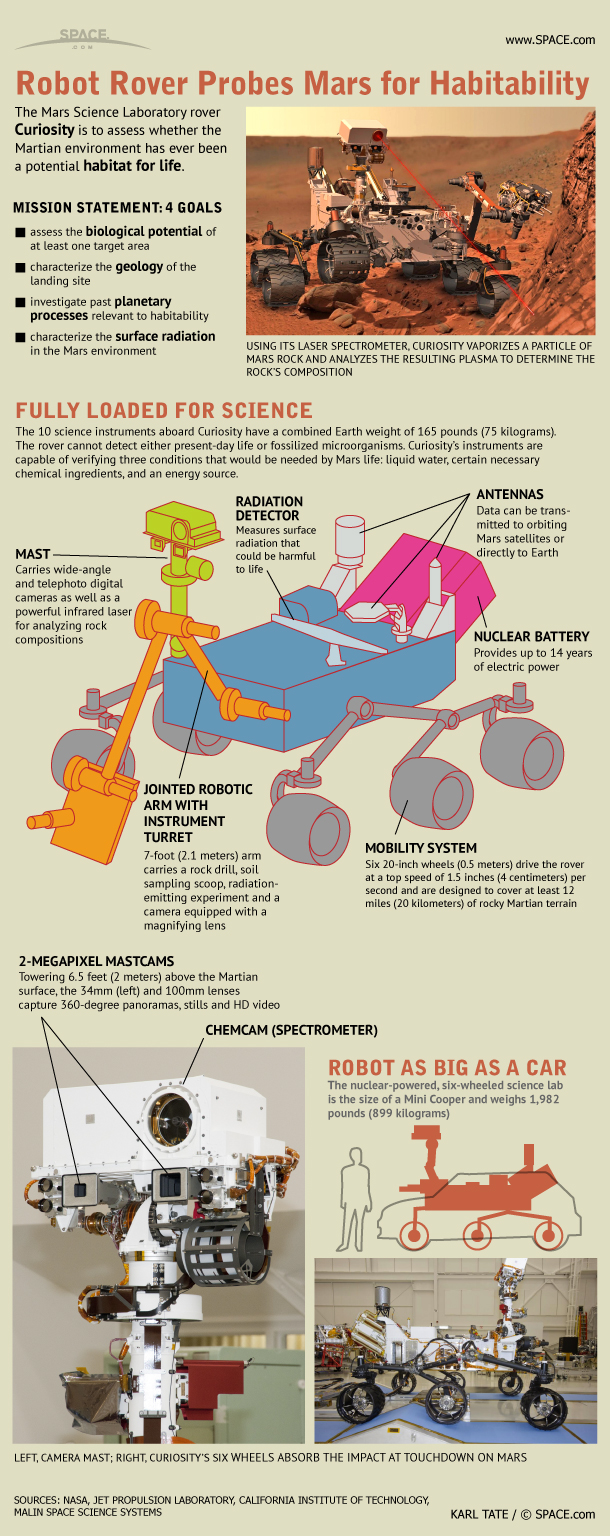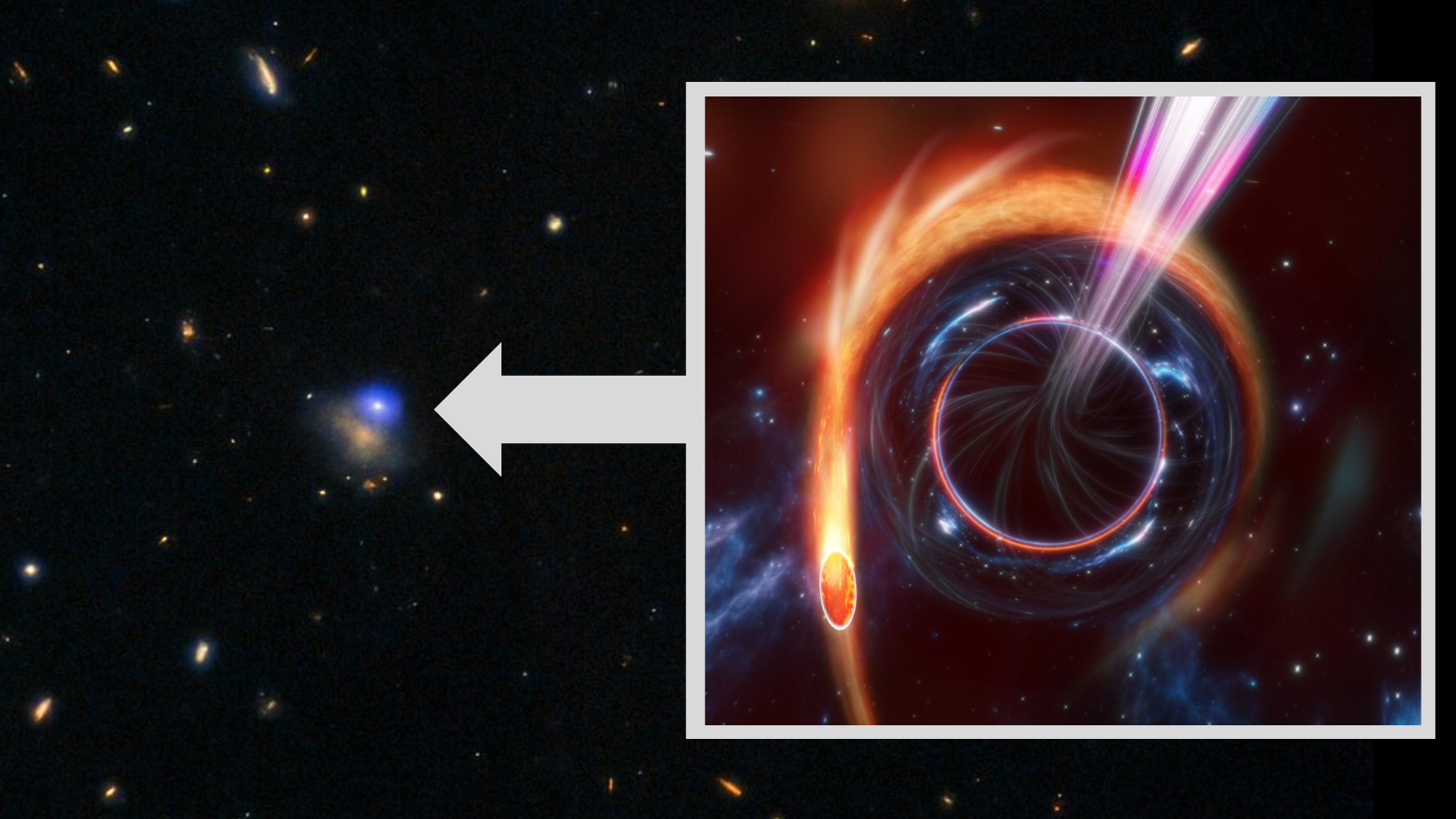Huge Mars Robot Armed With Laser, Cameras, Curiosity (Infographic)

The Mars Science Laboratory rover Curiosity aims to assess whether the Martian environment has ever been habitable to life. The 10 science instruments aboard Curiosity have a combined Earth weight of 165 pounds (75 kilograms).
Curiosity's mission has four goals: to assess the biological potential of at least one target area, to characterize the geology of the landing site, to investigate past planetary processes relevant to habitability, and to characterize the surface radiation in the Mars environment.
The rover cannot detect either present-day life or fossilized microorganisms. Curiosity's instruments are capable of verifying three conditions thought to be necessary for life: liquid water, certain chemical ingredients, and an energy source.
Towering 6.5 feet (2 meters) above the Martian surface, Curiosity's mast carries wide-angle and telephoto digital cameras as well as a powerful infrared laser for determining the composition of rocks. The laser can vaporize a particle of Mars rock and analyze the resulting plasma.
A 7-foot (2.1 meters) robot arm carries a rock drill, soil sampling scoop, radiation-emitting experiment and a camera equipped with a magnifying lens.
Nuclear batteries provide up to 14 years of electric power.
The rover's mobility system has six 20-inch (0.5 meters) wheels that drive the rover at a top speed of 1.5 inches (4 centimeters) per second and are designed to cover at least 12 miles (20 kilometers) of rocky Martian terrain.
Breaking space news, the latest updates on rocket launches, skywatching events and more!

Karl's association with Space.com goes back to 2000, when he was hired to produce interactive Flash graphics. From 2010 to 2016, Karl worked as an infographics specialist across all editorial properties of Purch (formerly known as TechMediaNetwork). Before joining Space.com, Karl spent 11 years at the New York headquarters of The Associated Press, creating news graphics for use around the world in newspapers and on the web. He has a degree in graphic design from Louisiana State University and now works as a freelance graphic designer in New York City.
